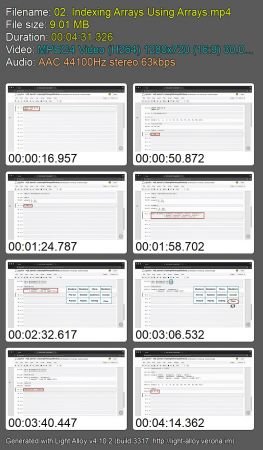O
0

Janani Ravi | Duration: 1:43 h | Video: H264 1280x720 | Audio: AAC 44,1 kHz 2ch | 207 MB | Language: English
As working with huge numeric datasets becomes the norm, using the right tools and libraries to work with the data becomes very important. NumPy allows data analysts and data scientists to work with multi-dimensional data to solve these problems.
As machine learning and deep learning techniques become popular, getting the dataset into the right numeric form and engineering the right features to feed into ML models becomes critical.
In this course, Working with Multidimensional Data Using NumPy, you'll learn the simple and intuitive functions and classes that NumPy offers to work with data of high dimensionality.
First, you will get familiar with basic operations to explore multi-dimensional data, such as creating, printing, and performing basic mathematical operations with arrays. You'll study indexing and slicing of array data and iterating over lists and see how images are basically 3D arrays and how they can be manipulated with NumPy.
Next, you will move on to complex indexing functions. NumPy arrays can be indexed with conditional functions as well as arrays of indices. You'll then see how broadcasting rules work which allows NumPy to perform operations on arrays with different shapes as well as, study array operations such as np.argmax() which are very common when working with ML problems.
Finally, you'll study how NumPy integrates with other libraries in the PyData stack. You will also cover specific implementations with SciPy and with Pandas.
At the end of this course, you will be comfortable using the array manipulation techniques that NumPy has to offer to get your data in the right form for extracting insights.

Download link
rapidgator.net:
You must reply in thread to view hidden text.
uploadgig.com:
You must reply in thread to view hidden text.
nitroflare.com:
You must reply in thread to view hidden text.

